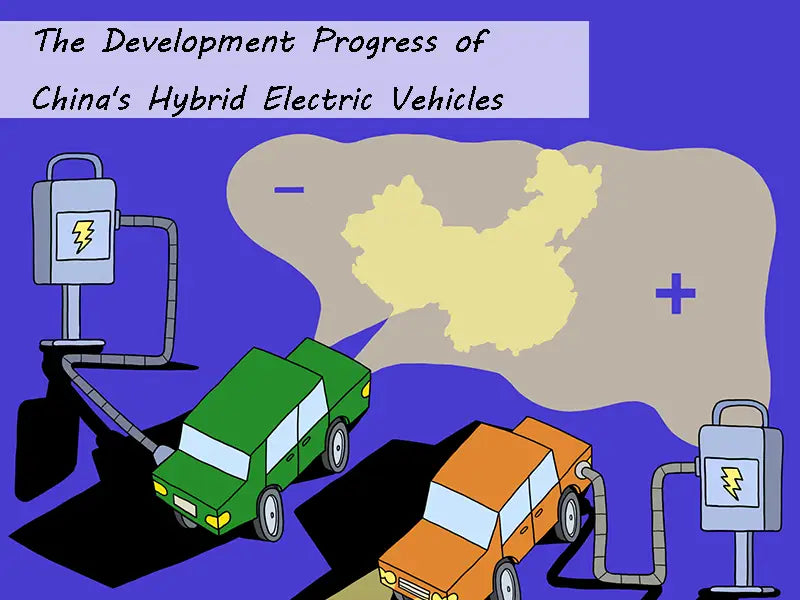
Main content:
It is predicted that by 2013 China will produce only 14,000 China's hybrid electric vehicles per year. The biggest drag on Chinese hybrids is cost. There are 8 hybrid models launched in China in 2008, and by 2013 there will be 10 hybrid models.
1. China’s Hybrid Vehicles
The EQ7200 motor drive system of China's hybrid vehicles Dongfeng Motor Hybrid Electric Car is the most difficult subject in the "10th Five-Year Plan" and "863 Plan" special motor drive common technology. The torque density of the permanent magnet motor is comparable to that of the Toyota Prius hybrid motor. The research group has successfully developed a permanent magnet reluctance motor with a high peak torque of 180N•m and a 4 times weaker field and its drive, and has completed a 15,000-kilometer formal certification experiment.
In addition, Jiexun Hybrid is a pure China's hybrid electric vehicles developed by Changan Automobile Group. From the entire China's hybrid electric vehicles to the hybrid system, it is independently developed by Changan Group and has complete independent intellectual property rights. The level of power components such as hydrogen power batteries is in a leading position in China's hybrid vehicles. The China's hybrid electric vehicles can maximize the energy saving and environmental protection advantages of the hybrid system on the premise of ensuring power.
Beiqi Foton Hybrid Vehicles have been commercialized in Guangzhou, thus becoming one of the earliest enterprises in China to realize commercialized production of new energy vehicles. In 2004, Foton Motor began to develop hybrid buses. Foton's research and development of hybrid vehicles is based on independent development, but at the same time, it adopts the research and development method of introduction, digestion, absorption and innovation, and carries out technical cooperation with Eaton Corporation of the United States to jointly develop hybrid power systems. Taking city buses as the breakthrough point in research and development, we will focus on the development of 11.4m large city buses and 12m hybrid buses. The joint development has significantly accelerated the research and development speed of Foton's hybrid electric bus, and the industrialization process has also been greatly shortened. In July 2005, the whole China's hybrid electric vehicles design was completed. In December 2005, two prototypes were successfully trial-manufactured. In October 2006, the reliability test of nearly 70,000km was completed. On January 11, 2008, Guangzhou First Bus Company purchased 30 Foton hybrid buses for commercial operation in the urban area of Guangzhou, taking the first step in the industrialization of hybrid buses in China. As of June 20, 2008, the cumulative mileage of these China's hybrid electric vehicles was 1.1 million km, the longest mileage per vehicle exceeded 50,000 km, the average attendance rate was 97.2%, and no major failures occurred; the average fuel consumption per 100 kilometers was 30.5L, and The minimum fuel consumption per 100 kilometers is 27.3L, and the average fuel consumption is more than 25% lower than that of traditional models; nitrogen oxides are reduced by about 27%, and absorbable particulate matter is reduced by about 19%, which is close to the national N level. Reliability, fuel economy are outstanding, and emission reduction effect is remarkable. Allegedly, it is now 400,000 to 500,000 yuan to buy a traditional air-conditioned bus, and the price of a hybrid vehicle in China is 850,000 to 900,000 yuan. The difference between the two is about 400,000 yuan. However, the use of hybrid electric buses can save about 89,100 yuan in fuel costs each year. At present, Foton hybrid electric buses use Japanese batteries with an 8-year warranty period, which saves a total of about 700,000 yuan during its service life. Foton is also developing a plug-in hybrid technology, which uses "fuel-electric-electric-electric four-hybrid". The oil is the traditional fuel engine, and the three "electric" refers to the battery, the capacitor, and the power supply. The project is applying for the national "863" project. At present, Foton Motor has made a systematic plan for the future development of new energy vehicles, and established a special new energy vehicle research center. In addition to the passenger cars that have made remarkable achievements, the company will launch new energy models such as trucks, MPVs, and small multi-purpose vehicles in the near future, striving to stand on the same starting line with international companies in new energy technology.
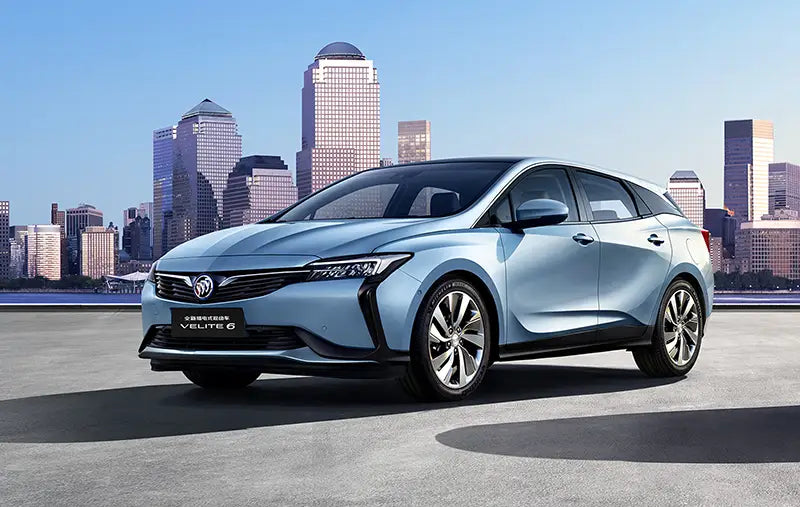
As China's fourth-largest automaker and a partner of Ford Motor and Suzuki Motor Corporation, Changan Automobile Company announced in mid-December 2007 that it would start production of a China's hybrid electric vehicles, the Jie Xun mini wagon. The China's hybrid electric vehicles adopts the state-owned hybrid drive system technology of the "863 Program" of the Ministry of Science and Technology. After 6 years of development, the fuel consumption can be reduced by more than 20% compared with conventional vehicles.
Electric vehicle manufacturers ZAP, Youngman Automobile Group (Jinhua, Zhejiang) and Al Yousuf Automobiles announced at the end of November 2007 that they would establish an electric and hybrid vehicle joint venture in Shanghai to manufacture 200,000 electric and hybrid vehicles a year.
General Motors announced at the end of November 2007 that it would start producing China's hybrid electric vehicles in 2008 as a tribute to the Beijing Olympics. GM deploys the GM China Hybrid Vehicle System for the Mal-ibu China's hybrid electric vehicles at Christmas in China. Although China's hybrid electric vehicles are not sold in the country much, GM is not far behind Toyota. The Buick LaCrosse Eco-Hybrid Oil China's hybrid electric vehicles became the first step in Shanghai General Motors' 2008 green product plan. The comprehensive fuel consumption of this China's hybrid electric vehicles have dropped by more than 15% year-on-year, thus enabling more consumers to fulfill their environmental protection commitments and fulfill their social responsibilities while enjoying their car life. General Motors Shanghai is promoting a green strategy and will develop green products and China's hybrid electric vehicles that use less fuel and reduce greenhouse gas emissions. The new green product strategy includes the Buick LaCrosse Eco-China Hybrid, which is said to provide 10 percent more miles per gallon than the non-hybrid model. In addition to the LaCrosse China's hybrid electric vehicles, the company also launched another China's hybrid electric vehicles in 2008 that can improve fuel efficiency by 50% compared to regular China's hybrid electric vehicles.

The troubled General Motors is stepping up its expansion in China. In March 2009, GM's global product research and development department announced in Shanghai that in 2009, GM will launch a new 1.6T engine in China and put it on the new car Cruze. The new Regal will add a 2.0T turbocharged version, and a dual-mode hybrid Cadillac Escalade will also be launched. In GM's China powertrain strategy blueprint, GM will continue to optimize existing engine technology, vigorously strengthen the application of hybrid technology, and lead the transformation of vehicle electrification, so as to realize the development layout of powertrain products in China. It's the introduction of new products. In the second half of 2009, GM's first turbocharged engine in China will be used in the new Buick Regal, and the Regal equipped with a 2.0L turbocharged engine will improve its power performance and fuel economy. According to GM's plan, its latest 1.61. turbocharged engine will also be used in a number of products that will be launched in China. The first China's hybrid electric vehicles product is the Chevrolet Cruze. According to reports, the 1.6L turbocharged engine to be launched in the China's hybrid electric vehicles market has excellent power performance: the maximum output power reaches 180hp, and this engine can maintain a sufficient torque output of 230N m between 1980~5500 rpm. . When needed, by activating the advanced electronic power surge function, the instant maximum torque of 266N•m can be achieved. The 1.6L turbocharged engine will become an engine with excellent power performance and leading fuel economy among products of the same level in China, and responds to the country's policy requirements to encourage the development of advanced, small-displacement, and high-performance engines with advanced technology. In addition to the 1.6T version of the Cruze, the Cruze will also be equipped with the latest generation of 1.6L and 1.8L engines, as well as a six-speed automatic transmission. In terms of hybrid technology, following the already listed Buick LaCrosse ecoHybrid China's hybrid electric vehicles, in 2009, GM will also launch a dual-mode hybrid Escalade in China, which can improve fuel economy by 50%.
According to the plan, SAIC Group will implement a trilogy of new energy vehicles with three technical lines of hybrid power, alternative fuel and fuel cells, and will put hybrid vehicles into small batch production in 2008, and achieve a production capacity of 10,000 vehicles in 2010. In 2010, the car will also realize commercial demonstration operation.
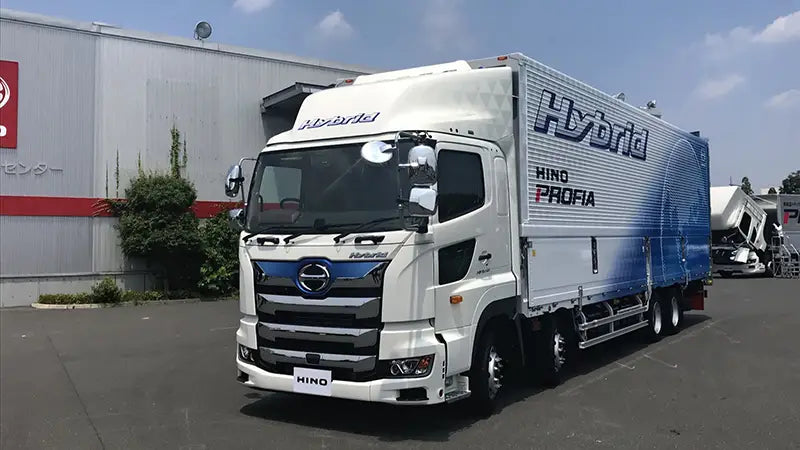
As the city with the earliest start of electric vehicle demonstration operation, the largest scale, the widest operating area and the highest degree of industrialization in China, Wuhan has basically formed an electric vehicle industry chain integrating electric vehicle R&D, industrialization, and demonstration operation. Wuhan's electric vehicle demonstration operation vehicle scale and demonstration operation mileage are in a leading position in China and have formed an international influence. Wuhan's electric vehicle business has shifted from research and development to the stage of industrialization where production and commercial promotion are the main focus. The industry chain has been extended around the industrialization of electric vehicles. It has basically formed three major businesses: research and development, demonstration operations and manufacturing. The core industrialization strategic layout has embarked on the fast lane of development. In the first five years of 2009, Wuhan built a total of 28 charging stations for electric vehicles. As of September 2008, the total operating mileage of 319 China's hybrid electric vehicles exceeded 16 million km, transporting more than 30 million passengers, reducing CO2 emissions by 3,100 tons, and saving 11 million liters of fuel. Among them, 50 Dongfeng hybrid buses have run 4.5 million kilometers in total, carrying 10 million passengers. 269 minibuses have operated 11 million kilometers and carried nearly 20 million passengers. Wuhan has become the largest hybrid vehicle operating scale and mileage in China. The longest and most passenger-carrying city.After the pure electric vehicle developed by Zhengzhou Nissan was approved for trial operation in Zhengzhou, Xinxiang, and Luoyang, Yutong did not want to lag behind, and in 2009, it sold gasoline-electric China's hybrid electric vehicles in batches. As of March 2009, Yutong has produced 7 prototypes of hybrid electric vehicles, which have been put into trial operation in Beijing, Guangzhou and Zhengzhou respectively, and Yutong has become the winning bidder for the Luoyang Electric Bus Demonstration Line Project. Of the seven gasoline-electric hybrid prototypes that Ningtong has produced, only one is 13.7m long, and the rest are 12m passenger cars. Recently, Yutong intends to produce an 18m-long gasoline-electric hybrid prototype, which should be the first new energy bus in China. In terms of production cost, a 12m hybrid car costs more than 400,000 yuan more than an ordinary car. The price of gasoline-electric hybrid buses is higher because they use a control system worth more than 400,000 yuan. In this system, lithium-ion batteries alone account for more than 200,000 yuan. According to reports, the hybrid device on the China's hybrid electric vehicles are mainly composed of lithium batteries, hybrid motors and wires. Among them, the state of the hybrid motor can be "adjusted" by itself in different driving states. For example, when accelerating, the hybrid motor will act as an electric motor to convert the electrical energy in the lithium battery into kinetic energy to cooperate with diesel for acceleration of the bus; when decelerating, the hybrid motor will act as a generator to convert kinetic energy into electrical energy and store it in the lithium battery. The lithium battery can be charged and used while driving, eliminating the trouble of charging the battery every day. Due to the simultaneous use of diesel and electricity, the amount of diesel used is correspondingly reduced, and the amount of exhaust gas is also reduced. When the bus starts, it is not like a thick black smoke floating from the tail of an ordinary passenger car, only a faint and almost invisible smoke. Under the theoretical and best operating conditions, the hybrid buses currently produced by Ningtong can save 17%~19% of fuel compared with ordinary buses with automatic transmission. Up to 25%. Generally, the operation cycle of a passenger car is 8 years, and it travels about 600,000 km. The new energy vehicle can save 60,000 liters of fuel during the operation cycle. If calculated according to the diesel price of 6 yuan/L, the fuel cost can be saved by 360,000 yuan.
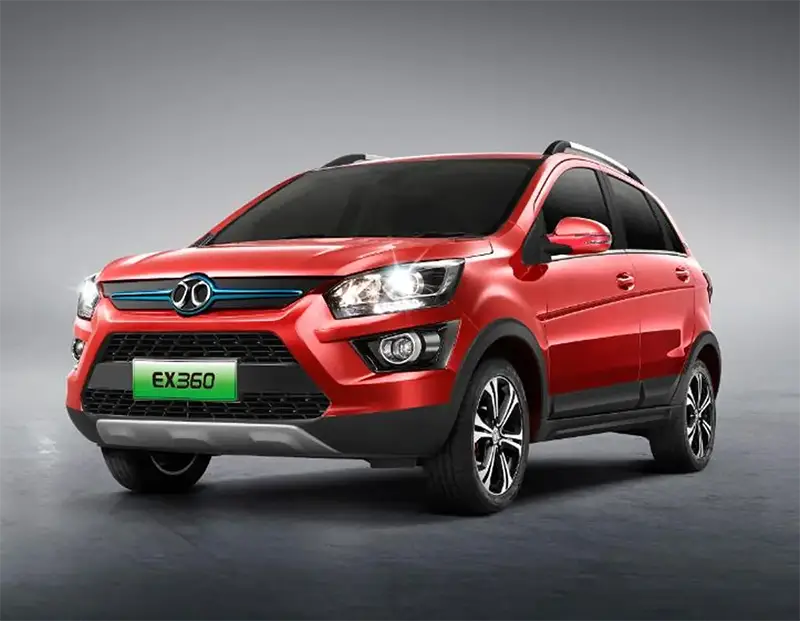
In late March 2009, Xiamen King Long won the bid for 60 hybrid electric buses of Beijing Public Transport Holding Co., Ltd., and Xiamen King Long received an order for 20 buses. Since 2001, Xiamen Kinglong has started the research and development of hybrid electric buses, and has successively cooperated with scientific research units such as Hunan Xiangtan Electromechanical Co., Ltd., Beijing Jiajie Boda Automobile Energy Saving Technology Co., Ltd., and Dongfeng Electric Vehicle Co., Ltd., and successfully developed XMQ6120G hybrid bus, XMQ6118G hydraulic hybrid bus, XMQ6125G hybrid bus and other models. After 8 years of hard work, Xiamen Kinglong has accumulated rich technical experience in the field of China's hybrid electric vehicles. Its China's hybrid electric vehicles have been operated in Xiangtan, Xiamen, Wuhan, Beijing and other places, and obtained a lot of valuable Test data, data, and have been recognized and praised by the market. The China's hybrid electric vehicles that won the bid is Xiamen King Long's new-generation hybrid bus XMQ6125G9 series. The China's hybrid electric vehicles won the "CIBC New Energy Green Bus Award" at the 7th Beijing International Bus Expo and the 4th China International Bus Competition. ".
In 2010, SAIC Motor launched a hybrid self-owned brand sedan, Delphi will provide it with hybrid power system, and A123Systems will provide it with lithium iron phosphate battery. This product is designed to allow easier integration of electrical and mechanical systems into existing vehicles, including a hybrid vehicle controller, variable frequency motor drives and controllers, DC/DC transformers, battery packs and controllers, Battery disconnect switch and hot swap management subsystem, etc. In the project, the engineering team of SAIC is responsible for the development of vehicle system integration, hybrid control strategy and application software. In addition to the ability to convert high-voltage battery power to low-voltage electricity for lighting and 12V low-voltage accessories, Delphi's hybrid products offer a range of other advantages. The vehicle controller in this product mainly coordinates the torque of the engine and the motor, so that the vehicle can exert the best performance, reduce exhaust emissions and improve fuel efficiency. The inverter in this product provides drive control for the motor, while the battery pack provides energy for starting and accelerating China's hybrid electric vehicles and stores recovered braking energy. The China's hybrid electric vehicles system uses an air-cooled lithium-ion battery pack as the electrical energy storage system. The battery pack adopts the lithium iron phosphate battery produced by the famous American battery manufacturer A123Systems using the patented nanophosphate technology, which is designed in groups by Delphi and integrated into this hybrid product.
Changfeng Motor Corporation, as the first company to focus on SUV research and development, will release a hybrid SUV named Cheetah CS7 Hybrid. The successful development of the hybrid SUV marks that Changfeng Motor has become a "pilot" enterprise in the SUV field, and its overall R&D strength and technical level have reached the international first-class level. It is understood that there are only a handful of companies with hybrid SUV technology in the world, and there are less than 10 hybrid SUVs on sale in the world, and most of them are concentrated in high-end luxury brands, such as BMW, GM, Mercedes-Benz, and Lexus. The release of the CS7 hybrid will break the long-term "technological monopoly" of foreign manufacturers, and national enterprises truly have the technology to manufacture hybrid SUVs. This international advanced hybrid system will be the first to be applied to CS7, and mass production will be realized in due time.
2. China’s hybrid buses
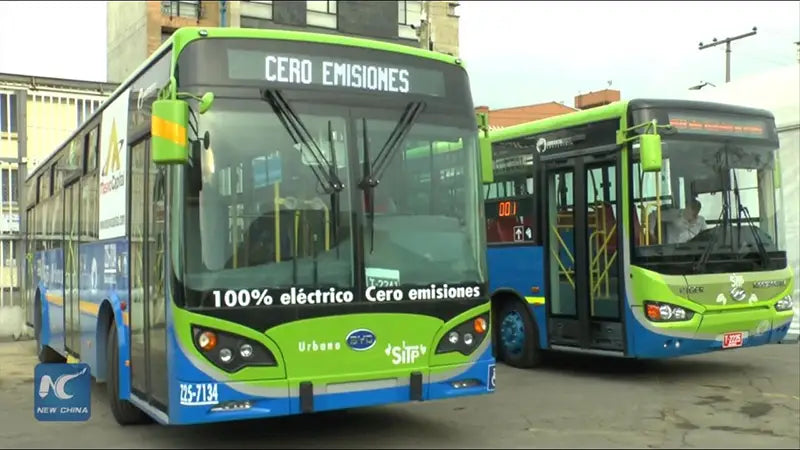
The first batch of 70 Dongfeng electric hybrid buses powered by diesel power from Dongfeng Cummins completed production at the end of January 2010 and were delivered to Wuhan Public Transport Group for trial operation on the streets of Wuhan. This is another expansion of Dongfeng Cummins in the field of hybrid electric buses following the successful trial operation of its engine products in Shenzhen Wuzhoulong hybrid electric bus, which has a positive impact on promoting the industrialization of China's hybrid electric vehicles. According to the statistics of China Association of Automobile Manufacturers, as of October 2009, more than 30 bus companies and many engine companies in 17 provinces (municipalities) have set foot in the field of hybrid buses. The vigorous investment of engine companies represented by Dongfeng Cummins in the field of hybrid power has contributed to the industrialization of hybrid buses in China. So far, Dongfeng Cummins has achieved a market share of more than 70% in the national hybrid electric bus field. That is to say, 7 out of every 10 hybrid buses on the road are equipped with Dongfeng Cummins electronically controlled diesel engines. In October 2008, the first batch of 50 Wuzhoulong hybrid buses equipped with Dongfeng Cummins engines were delivered to Shenzhen Public Transport Group, which opened the prelude to the commercialization of hybrid buses in China. According to reports, after running for more than a year, the attendance rate of these hybrid buses has reached 96%, which is higher than that of ordinary buses, and the fuel saving rate is more than 25%. In this way, about 90,000 yuan of operating costs can be saved a year. If the service life of the vehicle is calculated as 10 years, it can save a total cost of 900,000 yuan, and at the same time, it also emits more than 27t less CO2 than traditional vehicles.